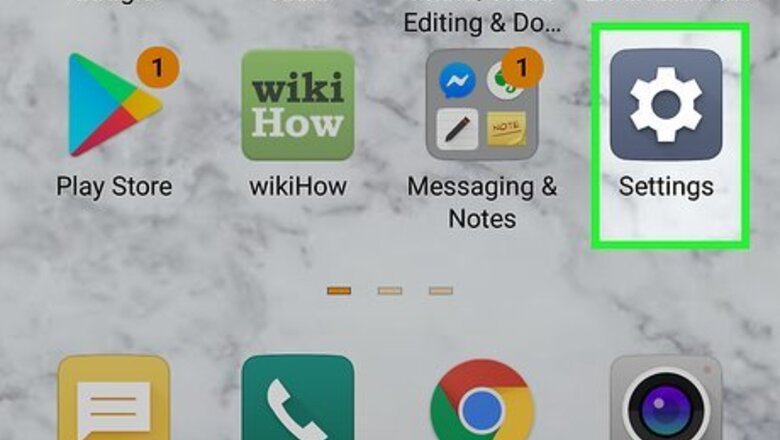
views
Changing the Screen Timeout Length
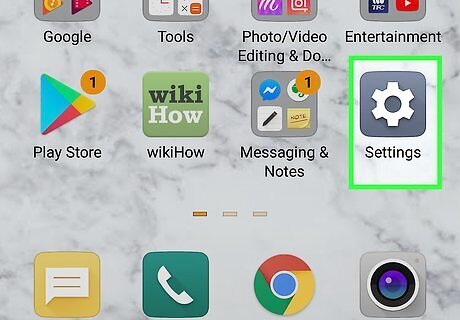
Open your Android's Settings Android 7 Settings. You can get there by tapping the gear-shaped icon in your Apps list. Alternatively, you can also find the Settings menu by swiping down from the top of the screen and tapping the icon that resembles a gear.
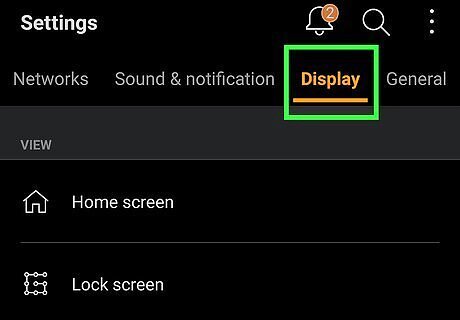
Tap Display. You should see this option on most Androids, although some models have varying language on their menus.
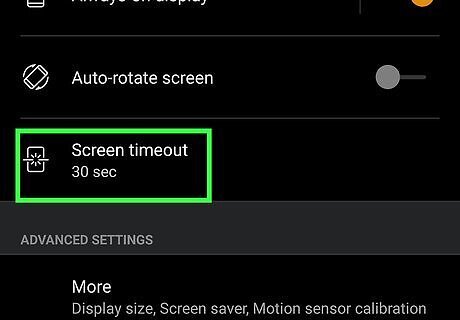
Tap Screen timeout. If you're using a Samsung model, you'll usually find this at the bottom of the menu. If you're using a recent Pixel model or another brand, you may have to tap Advanced and then Screen timeout or Sleep instead. If you are having a hard time finding this option, tap the magnifying glass icon in the upper-right corner of the Settings menu. Then type "Screen Timeout" or "Sleep" in the search bar.
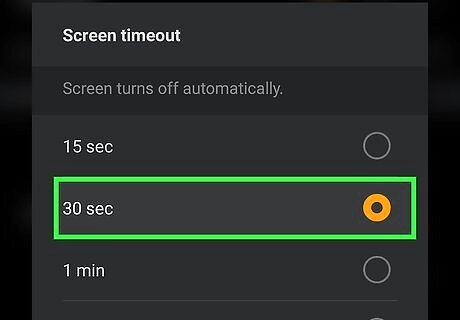
Choose how long your phone screen should stay on when idle. Tap the radio option next to the time you want your phone or tablet to wait before your phone screen times out. The smallest option is 15 seconds, which conserves the least amount of battery power. The largest option, 30 minutes, will consume the most. Once you tap your selection, it will take effect immediately. Some phones have fewer options from which to choose. For example, some Androids won't let you choose a timeout length longer than 5 minutes. If you're using a Samsung phone with Smart Stay enabled, your phone's screen will stay illuminated as long as you are looking at the screen regardless of what you select here. To customize your Smart Stay settings on a Samsung Galaxy, continue reading on.
Using Samsung Smart Stay

Open up your Samsung Galaxy's Settings Android 7 Settings. It's the gear-shaped icon in your apps list. If you're using a Samsung Galaxy, you have the option of enabling Smart Stay. This is a feature that keeps your phone's screen on as long as you are looking at it. Smart Stay uses your phone's front camera to do this. This setting will override your the screen timeout settings. Alternatively, you can swipe down from the top of the screen and tap the icon that resembles a gear to open the Settings menu.

Scroll down and tap Advanced features. It's fairly close to the bottom of the menu. It's next to a yellow icon that resembles a gear with a plus (+) sign in the middle. You may have to select Controls on some models. If you are unable to locate the Smart Stay option in your Settings menu, tap the magnifying glass icon in the upper-right corner of the menu and type "Smart Stay" in the search bar. This feature may not be available on all Samsung Galaxy devices.

Tap Motions and gestures. It's near the bottom of the Advanced Features menu.
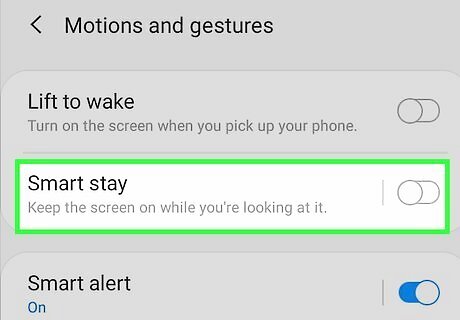
Tap Smart Stay. Now you'll see the Smart Stay switch. If Smart Stay is disabled, the switch will be gray or white. If it's another color, Smart Stay is already turned on. You can tap the colored switch to disable Smart Stay if you don't want to use your phone's camera to sense whether you are looking at the screen.

Slide the switch to the On position Android 7 Switch On. Once Smart Stay is enabled, your Android's screen will stay illuminated as long as the camera can sense your face. Smart Stay may not work properly in a dark room due to its dependence on the camera.















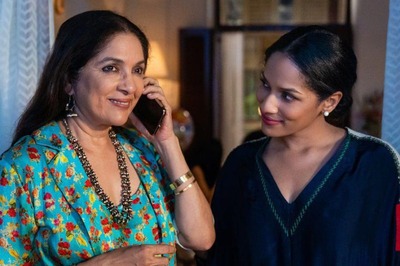




Comments
0 comment